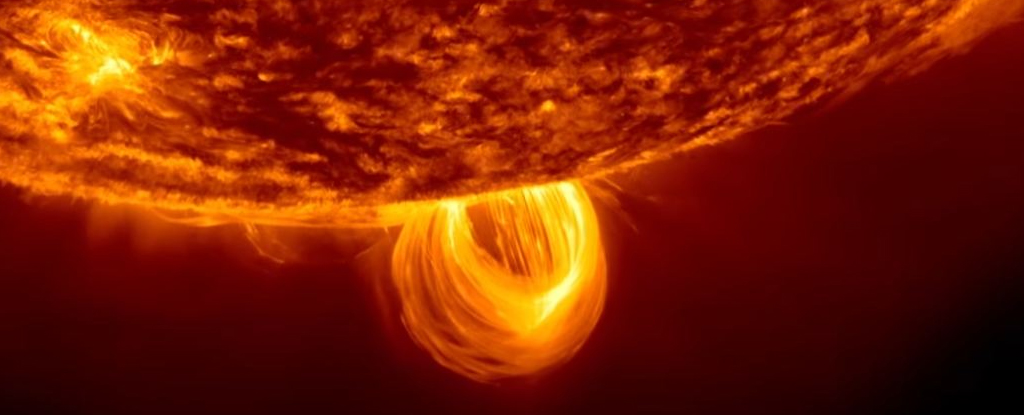NASA’s Goddard Space Flight Center has released an hour-long time-lapse video showing 133 days of the Sun’s life.
The video shows the Sun’s chaotic surface, where large loops of plasma arc along magnetic field lines above the star. Sometimes the loop plasma reconnects with the star, and other times it’s ejected into space, creating dangerous space weather.
The images come from the Solar Dynamics Observatory (SDO), a spacecraft launched in 2010 as part of NASA’s Living With a Star (LWS) program. Its main mission lasted five years, but NASA says the SDO should remain operational until 2030.
frameborder=”0″ allow=”accelerometer; autoplay; write clipboard; encrypted media; gyroscope; picture in picture; web-share” allowfullscreen>
The images in the movie were captured using the SDO’s Extreme Ultraviolet Variability Experiment (EVE) 108 seconds apart in the extreme ultraviolet. The SDO is in geosynchronous orbit 22,000 kilometers (13,670 miles) above Earth, and the Sun rotates every 27 days, creating an ever-changing picture of the star’s surface.
As it observes, the SDO measures the Sun’s interior, the magnetic field, and the hot plasma in the solar corona. It also measures the irradiance produced by the ionospheres of Earth and other planets.
Every day, the SDO captures around 70,000 images with a total of up to 1.5 terabytes of data. That’s an extraordinary amount of data and a 2017 article Nature which combined all of this data into a single repository, described it as “…one of the richest and largest repositories of solar imaging data known to man”.
Most astronomy deals with distant stars in other solar systems throughout the Milky Way. It’s easy to forget that we live next to a powerful star that is fusing hydrogen into helium long before life appeared on Earth and will outlast all life on Earth.
A lot happens in the sun, and its activity affects the earth and everything that lives on it. The sun provides a steady source of reliable energy, but it also has an unsettling, almost malevolent aspect.
NASA’s LWS program aims to better understand the Sun, in part so we can understand and predict severe space weather that can damage satellites, power grids, and other infrastructure. The SDO plays a crucial role in this.
A white paper explaining the mission states, “SDO will determine how the Sun’s magnetic field is generated, structured and transformed into violent solar events that cause space weather.”
frameborder=”0″ allow=”accelerometer; autoplay; write clipboard; encrypted media; gyroscope; picture in picture; web-share” allowfullscreen>
The spaceship was very successful. In 2020, NASA shot a video to celebrate the observatory’s 10th anniversary. It highlighted ten important observations and discoveries. SDO has watched massive flares erupt, spotted a new type of wave, watched planets as they pass in front of the Sun, and watched the star tear apart a comet that got too close.
The SDO is not alone in studying the sun. Those of the ESA SOHO (Solar and Heliospheric Observatory) has been studying the Sun since it was launched in 1995.
In 2018, NASA launched the Parker solar probe, which became the closest man-made object to the sun. In 2020, ESA launched its solar orbiterwhich will take the closest images of the Sun yet and study the star’s polar regions.
The Sun is a scientifically interesting object, but it’s also visually stunning and something everyone can relate to. As our civilization’s emerging space economy grows, we’ll have more satellites and other infrastructure—perhaps more the moon‘s surface – which will be vulnerable to violent space weather. Solar observatories like the SDO allow us to predict and eventually prepare for space weather.
Most of us don’t have a role to play in this, but we can still enjoy the movies.
This article was originally published by universe today. read the original item.





